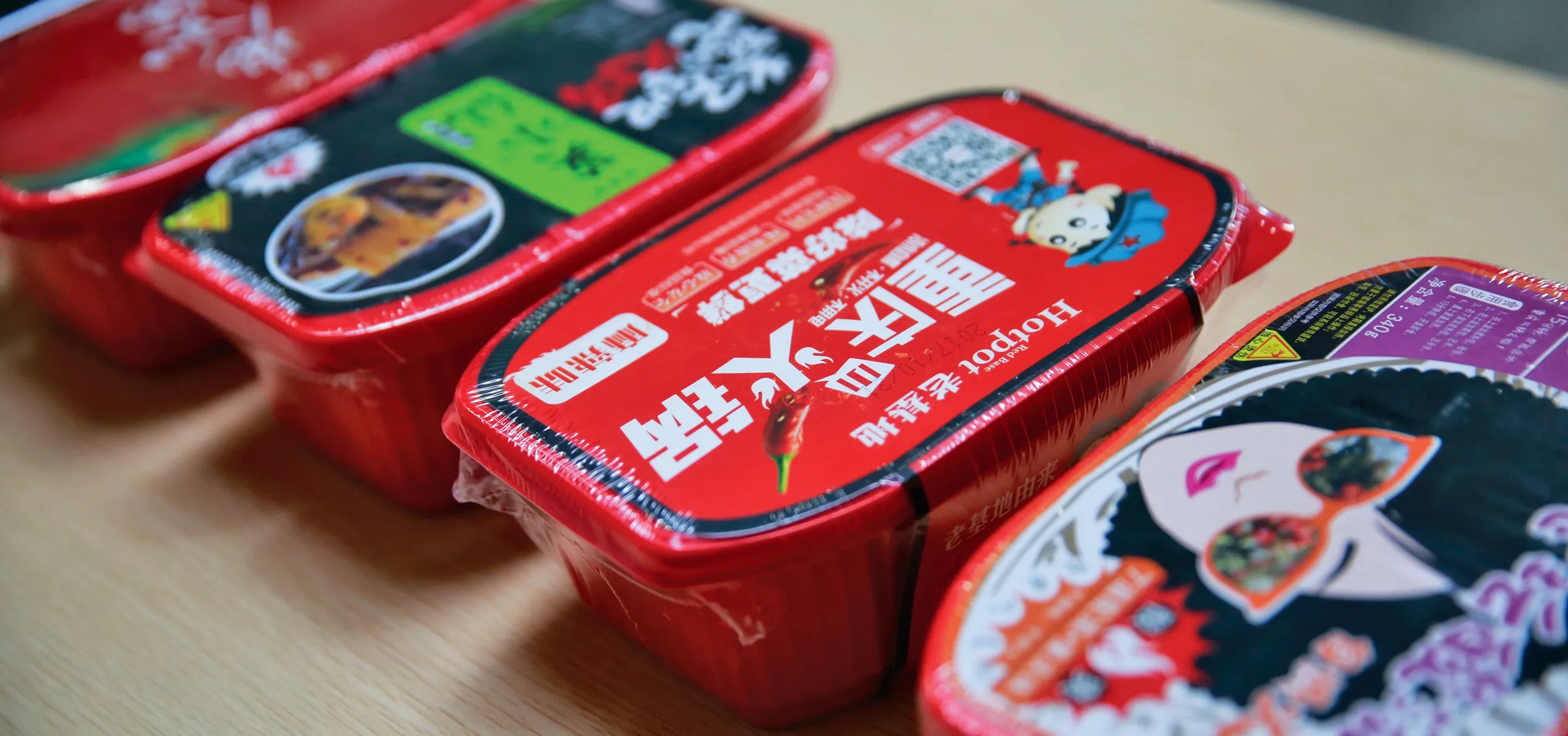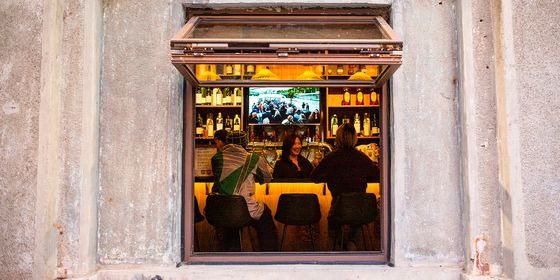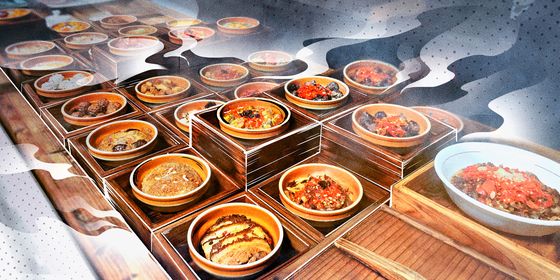Everyone’s favorite communal meal is now an instant convenience for one
If any dish can unite warring Chinese food lovers—split by endless debates over tofu jelly being salty or sweet, or whether to eat jiaozi or rice cakes during Spring Festival—it must be hot pot (huoguo), the boiling bowl in which anything can be cooked, and around which all gourmands can sit in harmony.
Few meals could be easier to arrange. But for some diners, even boiling food in water is too tall an order, as shown by the rapid rise of the instant hot pot, or “方便火锅” (fāngbiàn huǒguō, convenient hot pot).
Taking its nod from the humble packet of instant noodles, fangbian huoguo simply requires room-temperature water. Its growing popularity is not only a testament to maturing tastes in convenience food, but also a minor revolution in how traditional huoguo is served.
The huoguo has always been associated with a fireside atmosphere. The name literally means “fire pot,” referring to the two essential components for cooking—a clay, copper, or stainless steel pot, placed on a crackling fire. For fangbian huoguo, though, neither is necessary. The “pot” becomes a plastic box with two layers, packaged with various bags of seasoning and freeze-dried versions of the usual ingredients: meat, tofu, vegetables and, of course, noodles.
Like MRE military rations, the meal is easily cooked with a water-activated, flameless heat pack (usually containing quicklime) in the bottom layer of the container. When boiled, the water steams the ingredients on top: voila, 15 minutes later, you’re good to go—and we do mean “go.”
The traditional huoguo is a feast of togetherness, often lasting hours and requiring several refills of water: As Tony Leung Chiu Wai says in See You Tomorrow, “Those you can eat hot pot with are from the same world as you. It doesn’t matter what you eat, it only matters who sits beside you.”
The fangbian version, though, dispenses with such messy intimacy: It’s a one-pot shot, a solitary act of sustenance that dispenses with ritual. Not everyone likes the lively huoguo atmosphere. Qing dynasty scholar and gourmand Yuan Mei once observed in his Menus From the Garden of Contentment that “when people treat guests in winter, huoguo is often served; the noisy atmosphere is surely annoying.”
Still, those visiting a hot pot restaurant alone may find themselves getting sympathetic stares from other diners. Last year, a viral list on the internet titled “The 10 Levels of Loneliness” ranked “eating huoguo by oneself” as the sixth loneliest activity, sadder even than going to the cinema solo. At the popular hot pot chain Haidilao, staff will often place a stuffed toy at the table of any solitary diner.
Not surprisingly, some loners would rather not eat huoguo at all than go to a restaurant and order dinner for one. And while some chains, like Xiabu Xiabu, offer a personalized mini pot for each diner, most customers visit with a companion and share the raw ingredients. Even trying to make fangbian huoguo in the office is risky, as the sights and smells will certainly attract coworkers’ attention: You can take the hot pot out of the communal bowl, but you still can’t take the community out of a hot pot.
***
Three to Taste
Fangbian Huoguo
Haidilao’s Spicy Beef Tender
The most expensive pot, at 40 RMB. Created by the best-loved chain in China, the meal certainly looks good, but is nothing like a trip to the real thing
Mala Duo Na’s Chongqing Natural Hot Pot
Boasting a set of spicy chicken wings, Mala Duo Na’s 29 RMB effort is more of a meal than most, with a zingy chudian flavor that’s faithful to its namesake city
Wei Shu Wu’s Rock Hot Pot
An entry-level classic at 25 RMB, with all the right ingredients—literally: the container can barely hold all the vegetables once they’ve re-hydrated—including a whole sausage (albeit made of “chicken”)
Pot Tuck is a story from our issue, “The Masculinity Issue.” To read the entire issue, become a subscriber and receive the full magazine.












